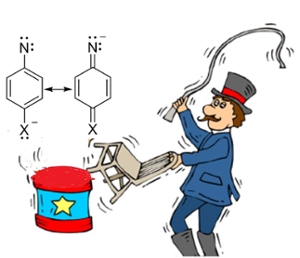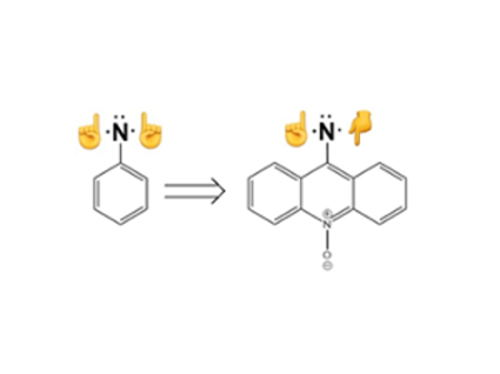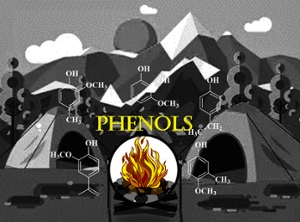Research Overview
The Wenthold Group investigates the reactivity, energetics, and structures of ions and neutral reactive intermediates using mass spectrometry. We are interested in all types of systems, including organic and inorganic molecules. New instruments and development of ESI instrumentation will allow us to study biomolecules as well.
Anionic Control of Nitrene Electronic Structure
Anionic substituents on aromatic rings are used to control the energies of the closed-shell singlet states of aromatic nitrenes. With judicious choice of substituents, we can create systems with electronic structures that resemble those for carbenes. In this project, we are investigating the gas-phase and condensed-phase reactivity of the modified nitrenes.

Toward an Open-Shell Singlet Nitrene
Negative ion photoelectron spectroscopy studies carried out in our lab have shown that open-shell singlet states of nitrenes are preferentially stabilized by electron delocalization. In this project, we are trying to prepare aromatic with low-lying open-shell singlet states, and maybe even open-shell singlet ground states!

Gas-Phase Pyrolysis by Charge-Remote Fragmentation
Gas-phase pyrolysis studies provide fundamental insight into the mechanisms by which molecules dissociate. However, they are generally limited to small, volatile molecules. We are using “charge-remote fragmentation” to investigate the dissociation processes for neutral portions of ions, where the charge acts merely as a convenient means for carrying them into the gas phase.

Mass Spectrometric Detection of Phenols using the Gibbs Reaction
The Gibbs reaction has been used for almost 100 years for the detection of phenols. We have recently shown that we can detect Gibbs products by using mass spectrometry, which increases the specificity of the method. In this project, we use mass spectrometric detection of the Gibbs reaction to analyze the phenolic composition of naturally occurring substances.
